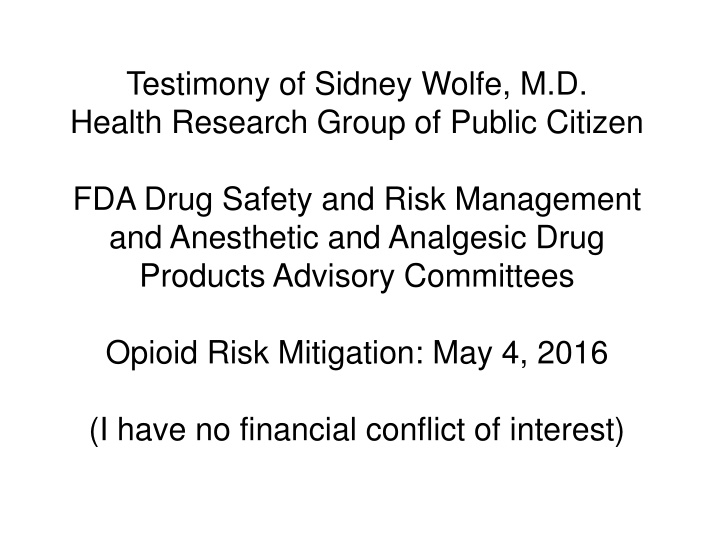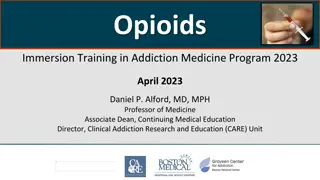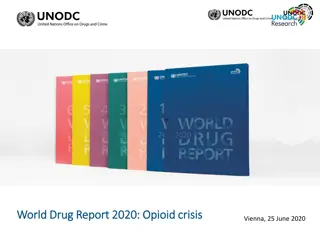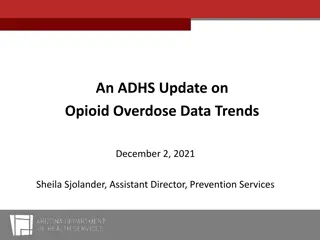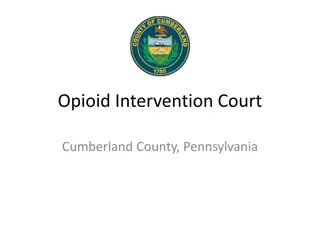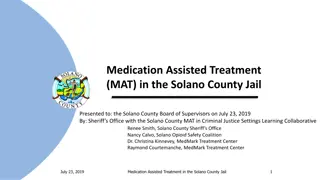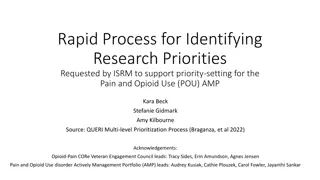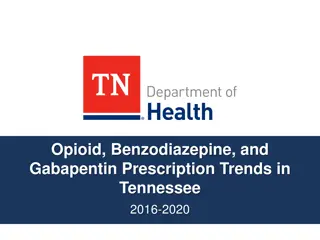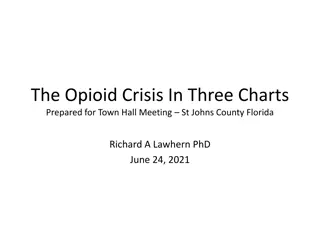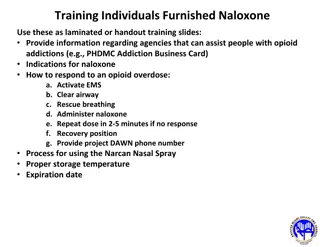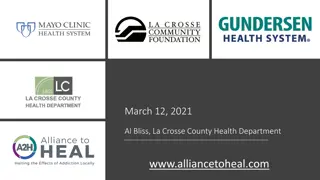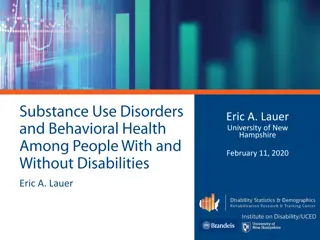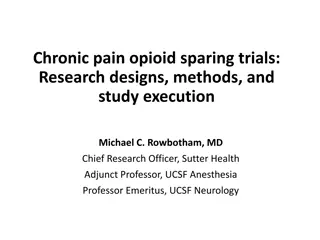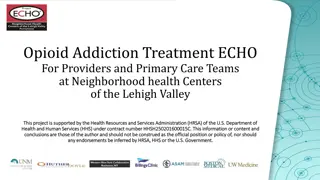Massive Opioid Use in the U.S.: International Discrepancies
In the U.S., there is a significant disparity in opioid consumption compared to the rest of the world. Dr. Sidney Wolfe's testimony highlights alarming statistics and raises questions about the appropriateness of opioid prescribing practices. The U.S. stands out with staggering numbers of opioid doses per million people per day, leading to concerns about overprescription and misuse. This issue is further magnified by comparisons with other countries, shedding light on global opioid usage trends.
Download Presentation

Please find below an Image/Link to download the presentation.
The content on the website is provided AS IS for your information and personal use only. It may not be sold, licensed, or shared on other websites without obtaining consent from the author.If you encounter any issues during the download, it is possible that the publisher has removed the file from their server.
You are allowed to download the files provided on this website for personal or commercial use, subject to the condition that they are used lawfully. All files are the property of their respective owners.
The content on the website is provided AS IS for your information and personal use only. It may not be sold, licensed, or shared on other websites without obtaining consent from the author.
E N D
Presentation Transcript
Testimony of Sidney Wolfe, M.D. Health Research Group of Public Citizen FDA Drug Safety and Risk Management and Anesthetic and Analgesic Drug Products Advisory Committees Opioid Risk Mitigation: May 4, 2016 (I have no financial conflict of interest)
Is the rest of the world wrong, but the U.S. right about massive opioid use? Is it any wonder that the CDC has found In 2014, more than 14,000 people [in the U.S.] died from overdoses involving prescription opioids. According to the UN-associated International Narcotics Control Board s 2015 report, Narcotic Drugs (also source for data on the next slide), the U.S. leads the world s 168 countries in the consumption of defined daily doses (DDD) of all schedule II opioids per million people per day: 50,142 such doses/million population per day, more than one daily dose for every 20 people in the U.S. Narcotic Drugs: Publication of INCB, 2015: Table XIV.1.a
DDD of total Schedule II Opioids (average for 2011-2014) for 168 Countries U.S. 50,142 DDD/million people/day (1 of 20) With average 11- 14 U.S. Population 314 million, average # of U.S opioid doses per day= 15.7 million for entire population, though most don t use opioids ----------------------------------------------------------------------- Canada 30,540 DDD/million people/day Germany 26,547 165 <25,000 all other EU countries (< 1 of 40) 141 < 5,000 129 < 2,500 (< 1 of 200) (< 1 of 400) Narcotic Drugs: Publication of INCB, 2015: Table XIV.1.a
International Changes in average total annual DDD: 2001-03 to 2011-13 Worldwide: increase of 4.33 billion, from 3.01 in 01- 03, to 7.35 billion total DDD/year in 2011-13 U.S. : Increase of 2.74 billion, from 2.27 to 5.02 billion Thus, the interim increase in US opioid prescribing is larger than the combined increases in the entire rest of the world, making up 63% of the entire 10- year world-wide increase. Berterame, et al. Lancet 2016; 387: 1644 56
Age-Standardized Rates of Cancer (Cancer ASR) Berterame, et al. Lancet 2016; 387: 1644 56
Conclusions from previous study Much of increased usage that has occurred in high-income countries is probably partly due to long-term prescribing for non-cancer pain. ..the absence of real growth in use in most of the world shows a continuing absence of provision of these essential medicines. Berterame, et al. Lancet 2016; 387: 1644 56
July 2010 AC Meeting: Industry-Proposed Opioid REMS the individual components of the REMS are insufficient to address the misuse and abuse of ER opioid analgesics. (25/35 agreed) Members stressed the need for appropriate and adequate legislation to further the collaboration with other federal agencies since voluntary training and education efforts have not worked. the failure can be put at the feet of the continued role of the drug companies in providing education about pain management...many people around this table were concerned that the educational message was biased by the role of industry.
Experiment to test physician choices as a function of patient requests With increasing DTC advertising, even though not for opioids, patients are more likely to request other drugs as well, having been generally activated by such advertising. 198 primary care physicians in six states were shown videos of patients presenting with sciatica, either passively requesting pain relief or actively requesting oxycodone. McKinlay et al. Med Care. 2014 April ; 52(4): 294 299
Effect of nature of patients pain med request-- presenting with sciatica-- on physicians choices of analgesic McKinlay et al. Med Care. 2014 April ; 52(4): 294 299
Conclusions Key decision-makers in the unacceptable U.S epidemic of opioid misprescribing, abuse and death are physicians, too often influenced by opioid industry- funded education and promotion. Whereas many prescribers are appropriately cautious, not contributing to the epidemic, too many are a complicit cause. If opioids were no more dangerous than other drugs, why do they require a narcotics license to prescribe? What more needs to be done? Mandatory training and testing to get a narcotics license, with as little opioid industry involvement as possible. Legislation is needed.
